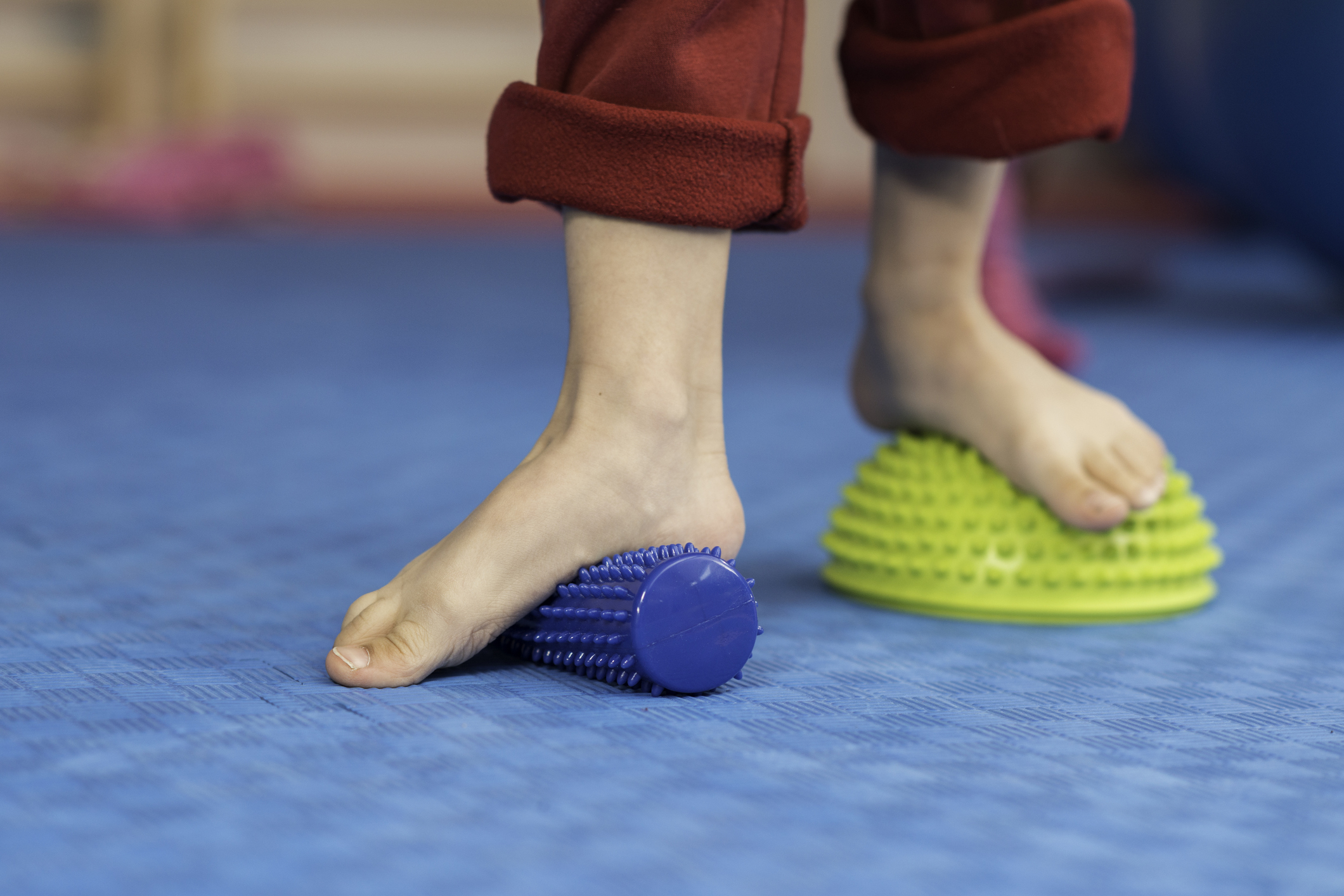Commonly Used Physical Therapy Terms
Abduction – A movement of a limb away from midline or the center of the body
Adduction – A movement of a limb toward midline or the center of the body
Ataxia – Muscular incoordination especially manifested when voluntary muscular movements are attempted
Base of support – The weight-bearing surface of the body. For example: in standing = the feet
Bilateral – Pertaining to two sides of the body, as in: both arms or both legs
Calcaneal Valgum – Angling of the heel of the foot outward, thereby flattening the arch of the foot
Calcaneal Varum – Angling of the heel of the foot inward, thereby increasing or heightening the arch of the foot
Cervical – Pertaining to the neck
Core – Pertaining to the trunk (primarily abdominals and back)
Dissociation – To separate. For example: one extremity/limb performs a movement without the other extremity doing the same or similar movement at the same time
Distal – Farthest from the center, from midline or from the trunk
Dynamic – Pertaining to vital forces or inherent power; refers to the body in motion; opposite of stationary
Extension – A straightening or backward movement of the spine or limbs
External rotation – An outward turning of the limb away from the body
Flexion – A bending or forward movement of the spine or limbs
Genu Valgum – Angling of the knees inward as in “knock kneed”
Genu Varum – Angling of the knees outward as in “bow legged”
Gross Motor – Refers to movement of large muscle groups
Hamstrings – A muscle group on the back of the thigh that can bend/flex the knee and straighten/extend the hip
Hyperextension – Excessive movement in the direction of extension 2
Hypermobility – Movement beyond normal range of motion
Hypertonic – Muscle tone higher than normal; resistance to passive movement; in extreme form = spasticity
Hypotonic – Less than normal tone; floppy
Internal rotation – An inward turning of the limb toward the body
Instability – Lack of firmness in weight-bearing. Difficulty maintaining weight bearing
Kinesthesia – Conscious awareness (perception) of body movement (direction and speed), detected by joints
Kyphosis – An increased convexity in the curvature of the thoracic spine (hunchback)
Long-sitting – Sitting with legs straight out in front Lordosis – An anterior/forward curvature of the lumbar and cervical vertebrae (spine). An increase is often referred to as “sway-back”
Lumbar – Pertaining to the low back
Midline – The theoretical lines that divide the body into two equal halves vertically or horizontally
Motor Control – The ability of the Central Nervous System to regulate or direct the musculoskeletal system in a purposeful act
Motor Planning – The ability to organize and perform movement in a meaningful manner
Obliquity – A slanting Pes Planus – Flat feet
Prone – Lying on the belly, face down
Proprioception – The awareness of posture, movement, changes in equilibrium, and the knowledge of position, weight, and resistance of objects in relation to the body. Sensed by muscles, tendons, and soft tissue
Proximal – Nearest to the point of attachment or center of the body
Quadriceps – A large muscle group on the anterior/front surface of the thigh responsible for knee extension
Range of Motion – A measure of the amount of movement/motion available at any given joint of the body
Recurvatum – A backward bending, frequently referring to the knees
Reflex – An involuntary/automatic response to a stimulus
Ring Sitting – Sitting on the buttocks with legs forming a ring in front (not crossed)
Sacral – The triangular-shaped bone below the lumbar spine formed, typically, by the fusion of 5 vertebrae 3
Side-sitting – Sitting on one hip with legs flexed to the opposite side
Spasticity – Hypertension of muscles causing stiff and awkward movements
Static – At rest; in equilibrium; not in motion Supine – Lying on the back, face up
Symmetrical – Referring to symmetry of the body, whose right and left halves are mirror images of each other
Tactile Defensiveness – A negative response or increased sensitivity to touch
Tailor-sitting – Buttocks on the floor with legs flexed and crossed (“pretzel sitting”)
Thoracic – Pertaining to or affecting the chest or upper back
Tone (muscle) – The degree of tension normally present in the resting state of a muscle
Unilateral – Affecting or occurring on only one side of the body
Vestibular Stimulation – Stimulation of the vestibular apparatus (bones of the inner ear and canals) that provides information regarding acceleration and the position of the body in space
Weight shift – Translation or movement of body weight from one side to another, forward or back


